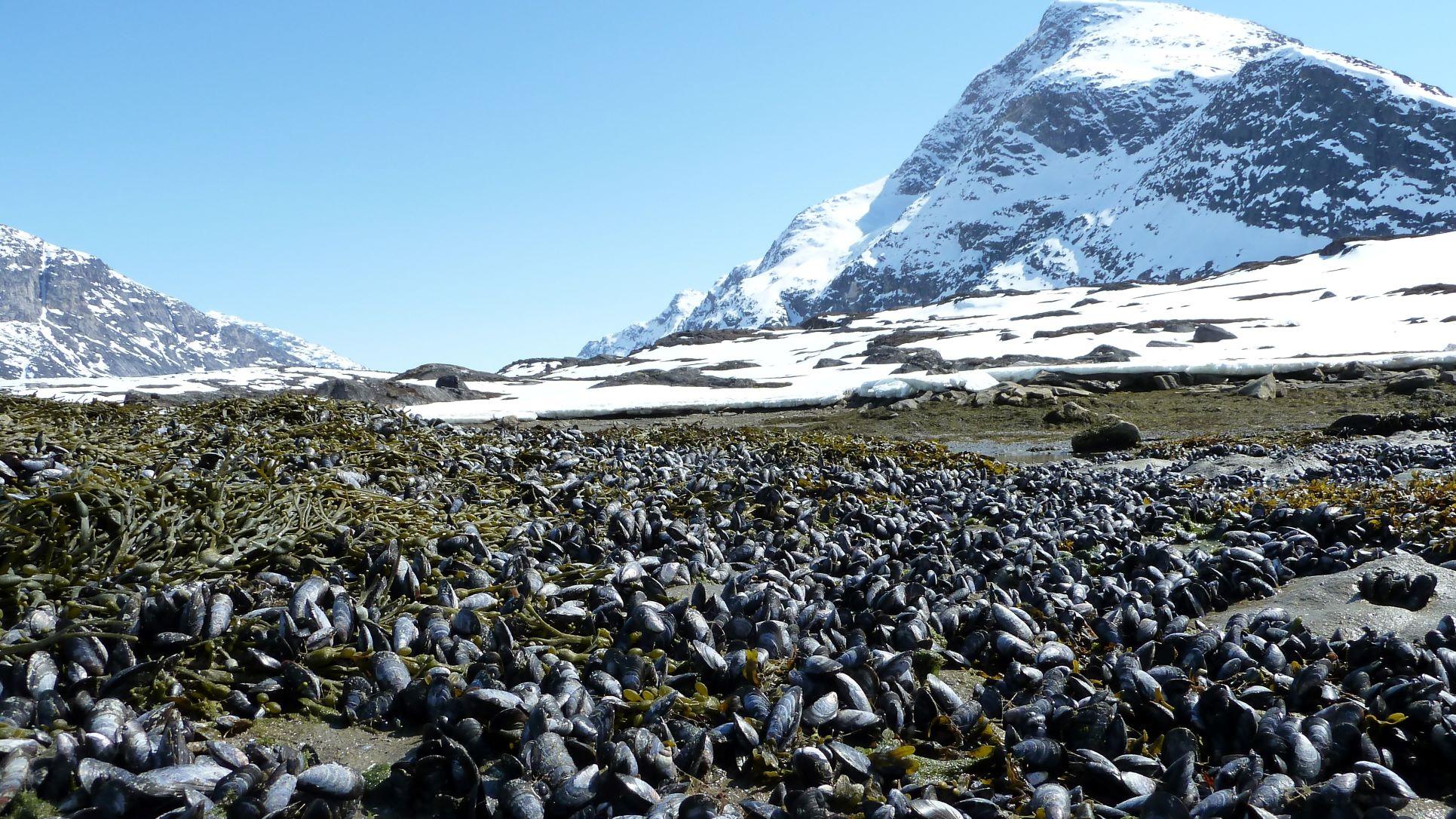
Submitted by Dr C.M. Martin-Jones on Mon, 31/01/2022 - 09:48
A new study has uncovered the mechanisms that help Arctic mussels cope with environmental stress caused by climate change.
The research, published in the journal Genes, observed how the blue mussel Mytilus edulis turns on and off genetic switches in response to human-induced impacts like rising air temperature and changing seawater salinity.
By regulating their gene response, blue mussels are able to protect their cells from damage caused by environmental stress. But the findings also report that these energy-intensive compensations cannot be sustained and, if they come under fire from multiple stressors at once, they can be pushed to their tolerance limit.
“These animals show a remarkable ability to respond to stress, but problems arise for them when different stressors are combined and take effect,” said lead author Nick Barrett who is jointly based at Cambridge’s Department of Earth Sciences and the British Antarctic Survey.
Blue mussels play an important role in coastal ecosystems, creating unique habitats that support hundreds of organisms, as well as being economically important for the aquaculture industry.
The team, which included Prof. Liz Harper from Cambridge Earth Sciences, collected blue mussels from the Greenland coast and captured snapshots of their genes as they responded to changing air temperatures and water salinity under laboratory conditions. Using an RNA-sequencing method, they were able to predict which proteins were activated by the mussel genes in response to environmental stress.
On Arctic coasts, blue mussels can withstand freezing conditions for several months and even tolerate extreme summer heatwaves of up to 36oC. Low salinity appears to impair their growth rates, however they can survive in near-freshwater for limited periods.
Although blue mussels are tolerant to wide-ranging conditions, the researchers report that they experience heightened stress when exposed to high air temperatures and low water salinity in combination. The overlapping effects of climate change are becoming increasingly common as the Arctic warms, and could signal a change in abundance and distribution of Arctic blue mussel populations in the future.
One of the energy-costly compensations they observed was a set of genes that they switch on in extremely low salinity water, the same genetic signature seen in embryonic freshwater mussels. According to the team, this genetic response suggests they might be coping with near-freshwater conditions by moving excess cellular water to small sacs between cells, via aquaporins, which can be later expelled.
Scientists had not previously known the mechanism by which blue mussels could survive in near freshwater conditions, and the team’s work provides the first genetic evidence to suggest they may switch on a similar water regulating system as embryonic freshwater mussels.
But they also note that blue mussels living in low salinity seawater, at the limit of their range, might be pushed to their tolerance limit if air temperatures soar – the effort of combatting both stressors taking up too much energy.
According to Barrett, scientists are only just beginning to understand how complex these overlapping impacts can be, “Climate change doesn’t just cause warming and that’s why, to predict where mussel populations and other important ecosystem species will live in the future, we need to look at combined impacts of climate change.”
Barrett, N.J., Thyrring, J., Harper, E.M., Sejr, M.K., Sørensen, J.G., Peck, L.S. and Clark, M.S., 2022. Molecular responses to thermal and osmotic stress in Arctic intertidal mussels (Mytilus edulis): The limits of resilience. Genes, 13(1), p.155.
